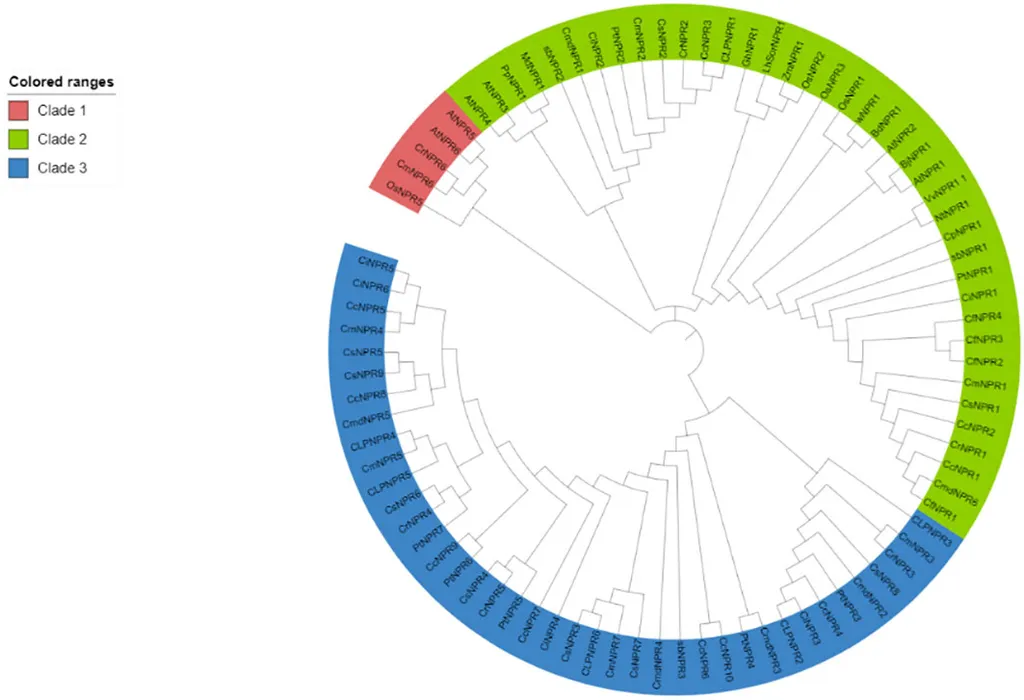In the heart of Pakistan’s agricultural landscape, a groundbreaking study led by Arooge Fatima from the University of Agriculture’s Plant Tissue Culture Cell in Faisalabad is set to revolutionize the way we understand and cultivate acid limes. The research, recently published in the esteemed journal Notulae Botanicae Horti Agrobotanici Cluj-Napoca (which translates to “Notes of the Botanical Garden of the Agricultural and Botanical Institute Cluj-Napoca”), delves into the morpho-chemical and genetic diversity of acid limes, offering insights that could significantly impact the fruit breeding and germplasm sectors.
Fatima and her team set out to characterize the morphogenetic variability and genetic diversity of several acid lime varieties, including the commonly cultivated ‘Mexican lime’ and ‘Eustis limequat’, as well as other potential varieties like ‘Tahiti lime’, ‘Seedless lime’, and ‘Tavares limequat’. Their findings reveal a rich tapestry of diversity that could be harnessed to improve commercial lime varieties.
The study found that leaf shape and size varied significantly among the different lime varieties. For instance, ‘Mexican lime’ and ‘Eustis limequat’ had elliptic leaves, while ‘Tahiti lime’, ‘Seedless lime’, and ‘Tavares limequat’ boasted obcordate leaves. Moreover, the ‘Seedless lime’ variety stood out with the largest leaf area. Fruit characteristics also showed considerable variation, with ‘Tavares limequat’ producing the heaviest fruit and ‘Seedless lime’ exhibiting the highest fruit diameter.
But the real game-changer lies in the genetic analysis. Using simple sequence repeat (SSR) markers, the researchers uncovered a wealth of genetic diversity among the lime populations. “The SSR markers, particularly CAC23 and CTT01, were incredibly effective in discriminating between diploid and polyploid limes,” Fatima explains. These markers amplified a maximum of 9-11 alleles, showcasing high discrimination and heterozygosity.
The implications for the fruit breeding and germplasm sectors are profound. By understanding the genetic diversity and morpho-chemical characteristics of these lime varieties, breeders can make more informed decisions, leading to the development of improved lime cultivars with desirable traits. This could enhance the commercial value of acid limes, benefiting growers and consumers alike.
Furthermore, the study’s findings could extend beyond acid limes. As Fatima notes, “The selected SSR markers could potentially be applied to other citrus species, opening up new avenues for research and breeding programs.” This could lead to a broader enhancement of citrus germplasm, ultimately benefiting the entire citrus industry.
The research also sheds light on the admixture nature of the lime genotypes, with ‘Tavares limequat’ emerging as the most divergent. This information is crucial for conservation efforts and breeding programs aimed at preserving and utilizing heterogeneous genetic material.
In conclusion, Fatima’s research is a significant step forward in the understanding and cultivation of acid limes. By harnessing the power of genetic diversity and advanced molecular markers, the study paves the way for innovative breeding strategies and germplasm enhancement. As the world continues to demand high-quality, nutraceutical fruits, this research offers a promising path forward for the agricultural and horticultural sectors.

